What’s it like to meet an elephant?
Two days of hands-on activities with Asian elephants at Anantara Golden Triangle. We rode, fed, and swam with the elephants, and learned from mahouts and a vet.
Asian Elephant Conservation
In Thailand, many elephants and their mahouts used to work in the logging industry. But in 1989, due to deforestation, the government outlawed logging. As a result, there was no work for the elephants and no income to care for them. Many mahouts took their elephants to the cities and they worked in poor conditions. In some cases, elephants were abused. The conservation groups found that if they purchased the elephants, the mahouts would use the money to get a new elephant and repeat the cycle. The Thai government created the Thai Elephant Conservation Centre to focus on conservation. Some conservationists formed NGO / business partnerships to create elephant camps and invited the mahouts and their families to live there.
Anantara Golden Triangle Resort
Anantara and the Four Seasons work with the Golden Triangle Asian Elephant Foundation. U.S. based Think Elephants also works at the camp, focusing on research and education. There are 26 elephants in the camp and room for only 2 more. The mahouts and their families live at the camp and care for their elephant for life. The foundation provides benefits to the families like healthcare and education. Anantara guests can select from several different elephant activities.
Mahout Training and Elephant Ride
On the first day, we did the mahout training: two hours very early in the morning and two hours in the afternoon. The hotel even provided mahout pants to wear.
In the morning, we drove to the river where the elephants were finishing their morning swim. We mounted elephants for a short walk to the elephant camp. At the camp, one of the mahouts gave a lesson on some of the commands like go, stop, turn, sit, lie down, put head down; and then we practiced. The elephants can learn up to 70 different commands! Here are some commands. We also saw the area where the wives produce silk and weave beautiful scarves and table runners. Then, we rode the elephants back toward the hotel. Lori rode Beau – see Beau’s story.
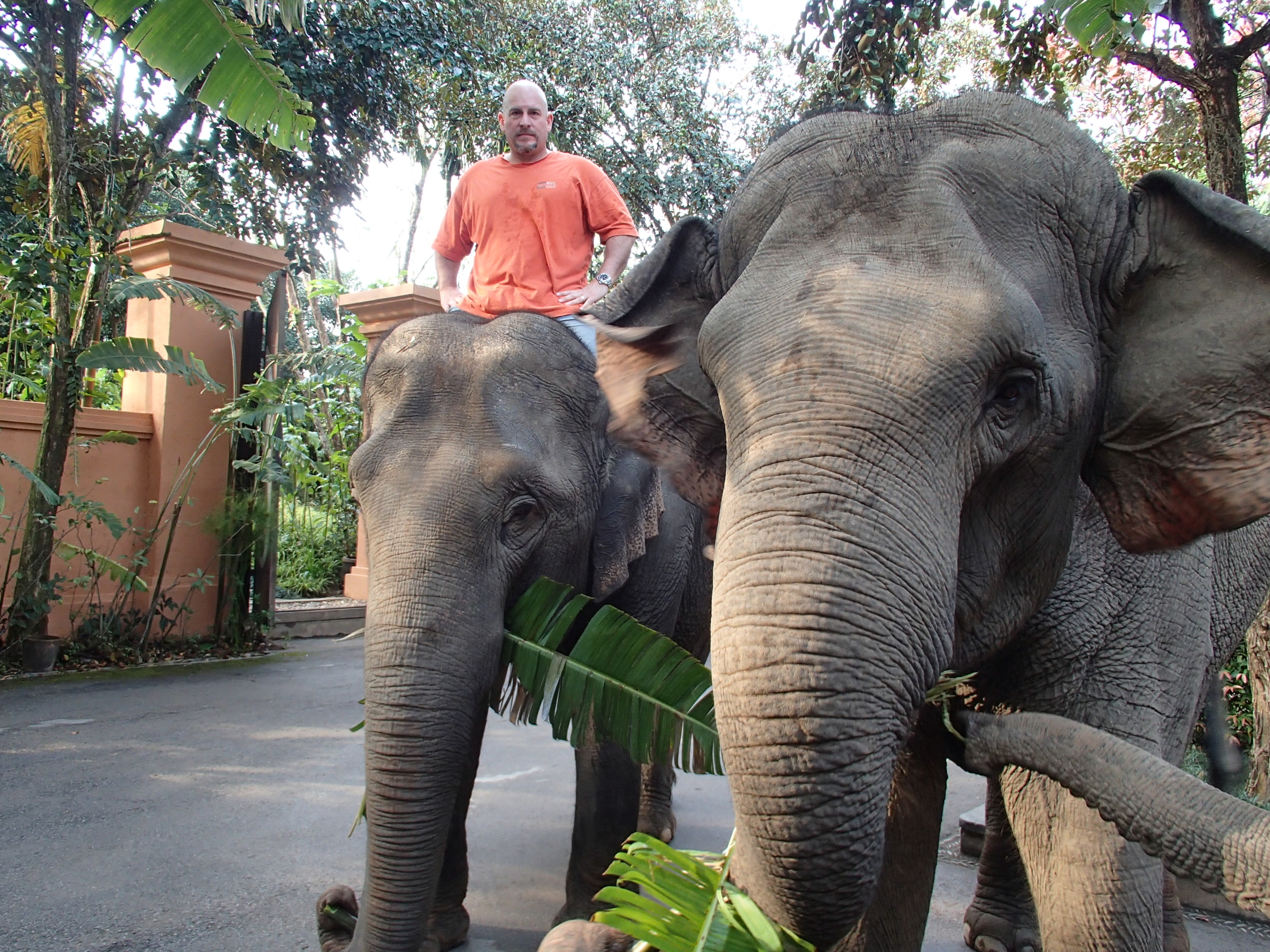
Michael and elephants
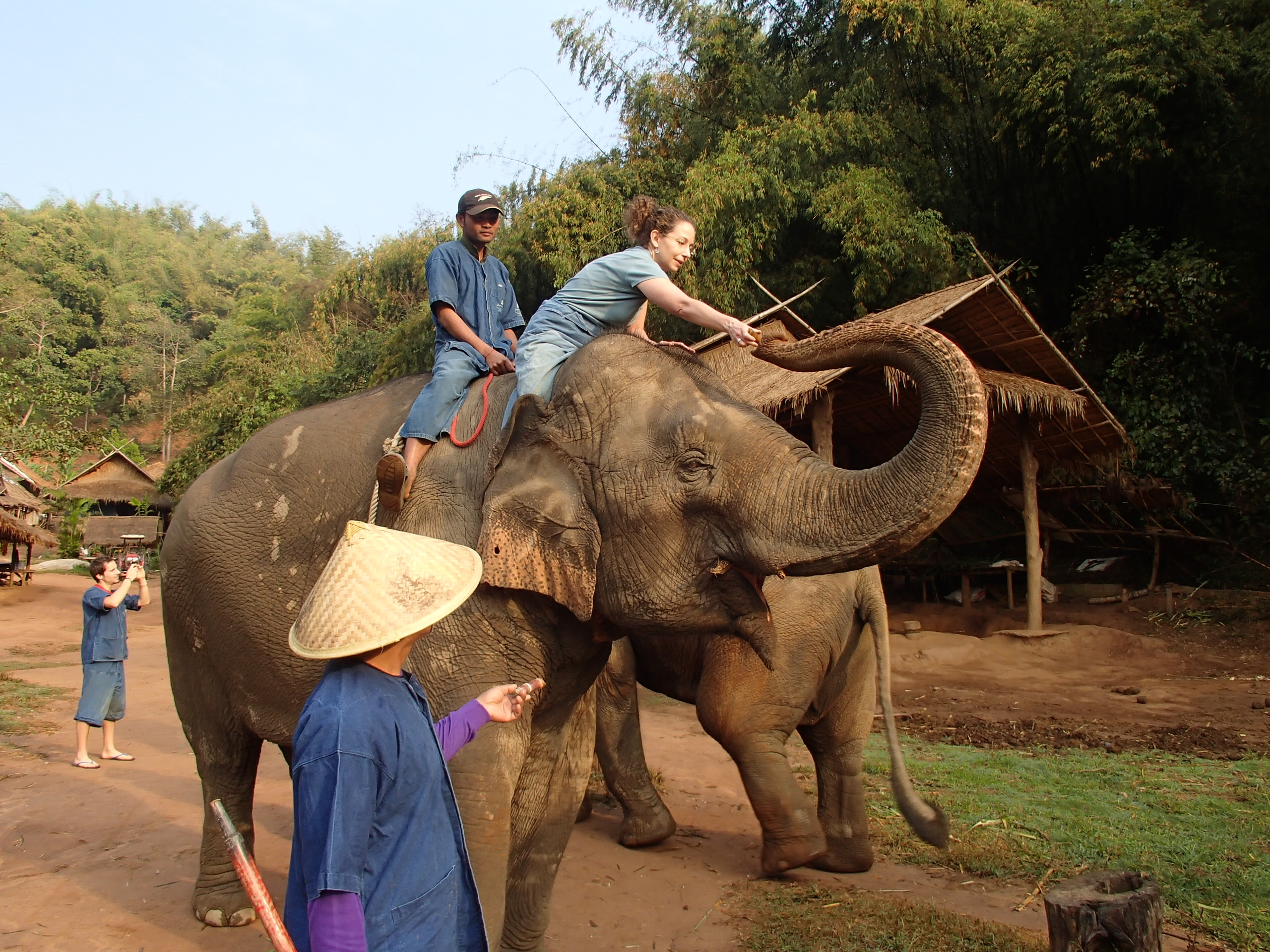
Bo and Lori
In the afternoon, we drove to the elephant camp and rode the same elephants for a long walk down to the river. Along the way, we fed them bananas. Bo was very piggy and ate as fast as Lori could tear them off (she is known for having a healthy appetite). When Lori ran out, Bo helped herself to leaves off the bushes along the way. She and some of the other elephants also stopped at a favorite spot to rub their backs in the muddy hillside. At the river, the elephants and riders went in for a dip. The mahouts gave commands to lie down and roll over. Lori was too chicken to go for the swim because the previous evening another guest said his foot got caught under the elephant. Since Lori is such a klutz, she envisioned herself on a segment on the Travel Channel show, ‘When Vacations Attack’ (if you haven’t seen the show, it is about people that get hurt during vacation). But it worked out great, because Lori was able to take lots of photos of Michael and his elephant (he did a swell job shifting around in the water). After the swim, the mahouts led the elephants to their spot in the forest and settled them in for the night. The camp puts a chain on the front foot of the elephant to keep them from wandering off the sanctuary – this protects the elephants and the guests.
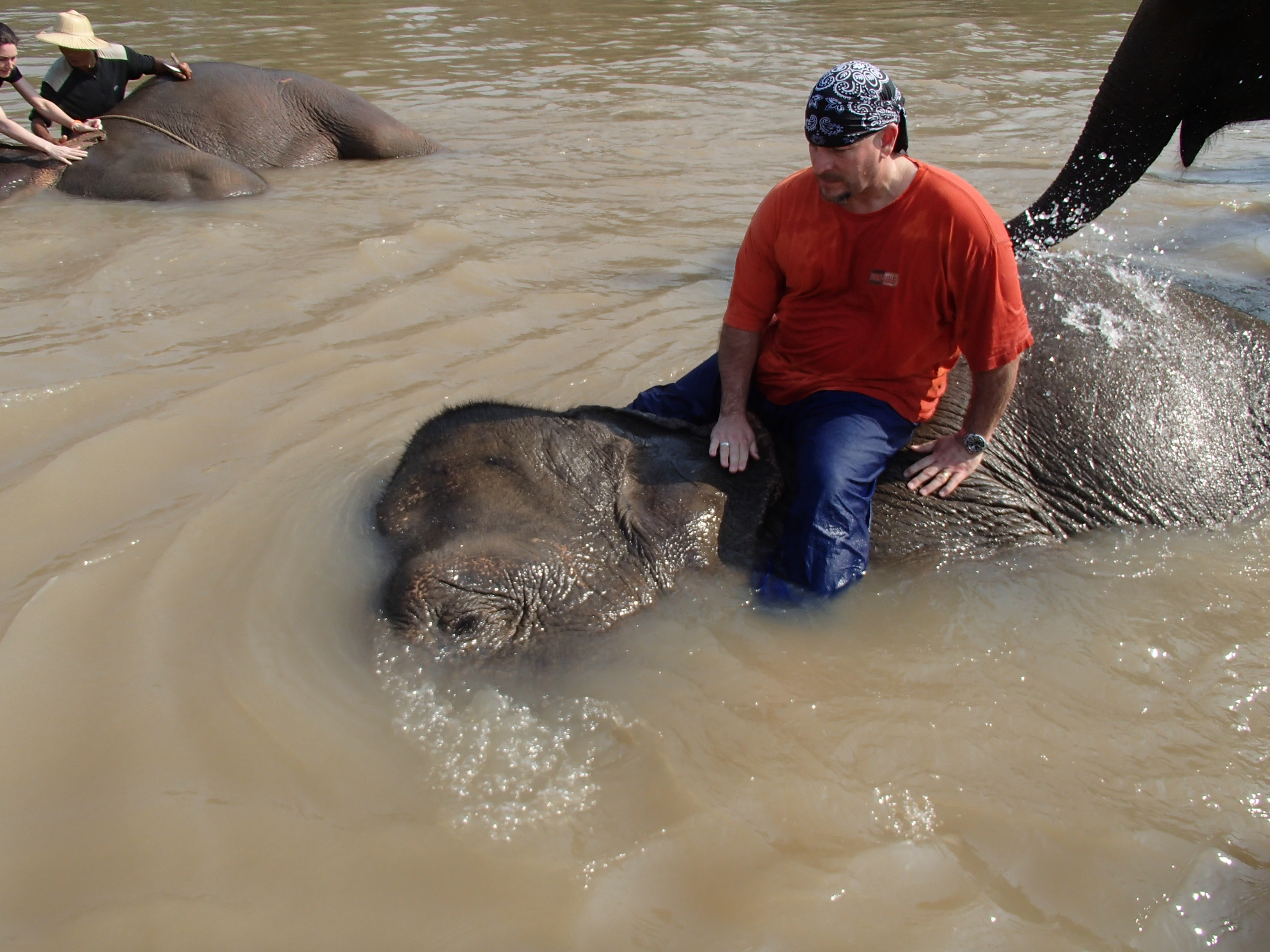
Swimming in the river
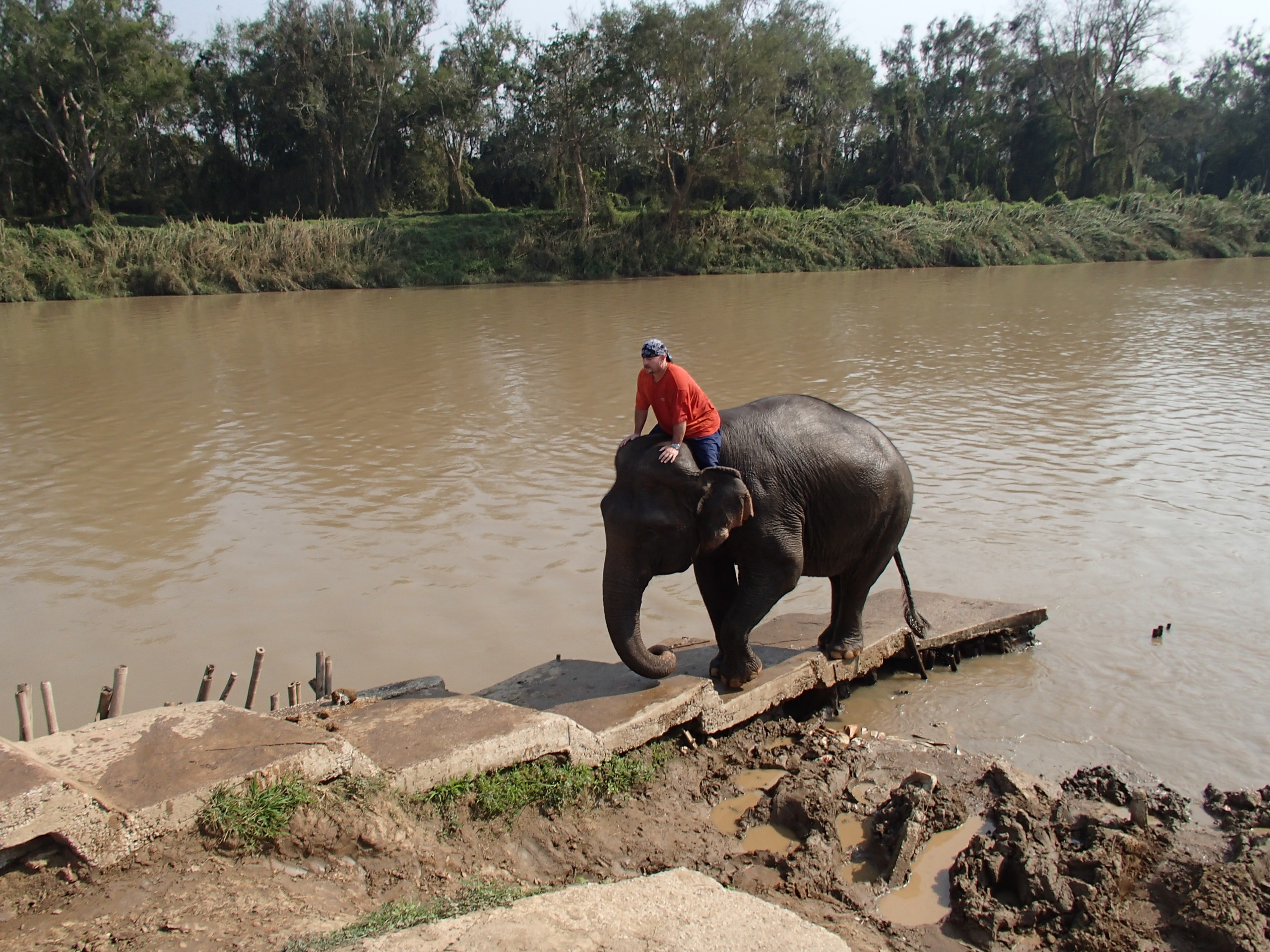
After a swim
Riding an Elephant
So what’s it like to ride an elephant? Well, there are different ways to get on – the elephant can lie down or sit down or stay standing and bend his leg. There is no saddle or rope, you just sit on the back close by the head and hold onto the head and ears. You have to balance and move with the elephant. Lori was afraid that her klutziness might cause her to fall, so she was joined by a volunteer or mahout who made her feel a lot more at ease – especially on one of the rides where Beau went up and down some hills and tilted her head way back to grab leaves off a tree. (Thanks to volunteers Leo, a biology teacher from the UK and Adrian, a veterinarian from Spain who lives in Paris, for being her ‘seat belt’!) We used the commands we learned to get the elephants to resume walking when they stopped to eat or move to the left or right (a few times they walked close to the hillside and we got a bit pelted by low tree branches).
Note about riding elephants: There are many tourist attractions where you can ride an elephant. Sadly, in some cases the elephants are mistreated, e.g., forced to walk on pavement, which hurts their feet, or not getting enough food and water. At Anantara, the eles walked mostly on dirt paths (except for near the hotel, where there was a paved road) and snacked as much as they wanted along the way.
Baby Elephant Experience
On the second day, we did the ‘baby elephant experience’ (1.5 hours in the mid-morning). Rachel from Think Elephants provided a very interesting and informative presentation about elephants. Here are some of the things we learned.
- The lifespan is 65 – 70 years.
- The gestation period is 22 months.
- Females either do not grow tusks or grow very small tusks.
- Elephants are vegetarians – they eat plants and fruit. (We know because we fed them a ton of bananas and sugarcane). They eat 12 – 16 hours a day!
- Elephants have so so eyesight, but an excellent sense of smell. They also have a specialized gland, the Jacobson’s organ, on the roof of the mouth. It is able to gather information about the surroundings by detecting and analyzing molecules and particles from the air. When elephants gather a sample of urine from the dirt with their trunk and touch it to the roof of the mouth, they can determine the donor’s sex, identity, and readiness for mating. They can up identify up to 100 different elephants through their urine.
- They are very social – the females live in a herd of 8 – 12 elephants. Sometimes two herds join together if there is enough food and water to sustain them.
- Elephants are very smart – they are one of only seven animals that can recognize themselves in the mirror. They can also work as a team to accomplish a task. Read about the research Think Elephants has conducted.
- Asian elephants are different than African elephants: they are smaller, have smaller ears, and the top of their head is curved (African elephants have a flat head).
- The elephant population in Asia is in danger! There are only about 45,000 – 50,000 elephants left (the number is an estimate, we don’t recall exactly).
Next, we drove to the baby elephant camp and met 7-year-old Meena, her mahout, and a veterinarian who demonstrated how to do a health check. We even had a clip board with checklist so we could note the results. The health check included the eyes, skin, respiration, tongue, tusks and teeth, ears, pulse, feet and nails, body measurement (condition, weight, and height), urination and deification (happily, we skipped that part). Below is a video of the health check (alert –it is a bit long).
Here are some interesting things we learned.
- The foot circumference is nearly half of the height. Meena’s foot is 107cm and her height is 215cm.
- The location to take the pulse is behind the ears.
- The front feet have 5 nails and the back feet have 4 nails.
- The formula to determine the weight is the chest circumference in cm – 3,336.
- The top of the ear develops a fold as the elephant gets older.
The mahout participated by giving Meena commands like, lift your foot. Meena was patient during the health check as long as there was plenty of sugar cane around. A few times, she started to tug at the vet’s shoelaces. After the heath check, we walked with Meena to an area with a hose to cool her off. As soon as we were done, she headed for the hillside and rubbed her back in the mud and then went to the forest to snack on some leaves with her friends.
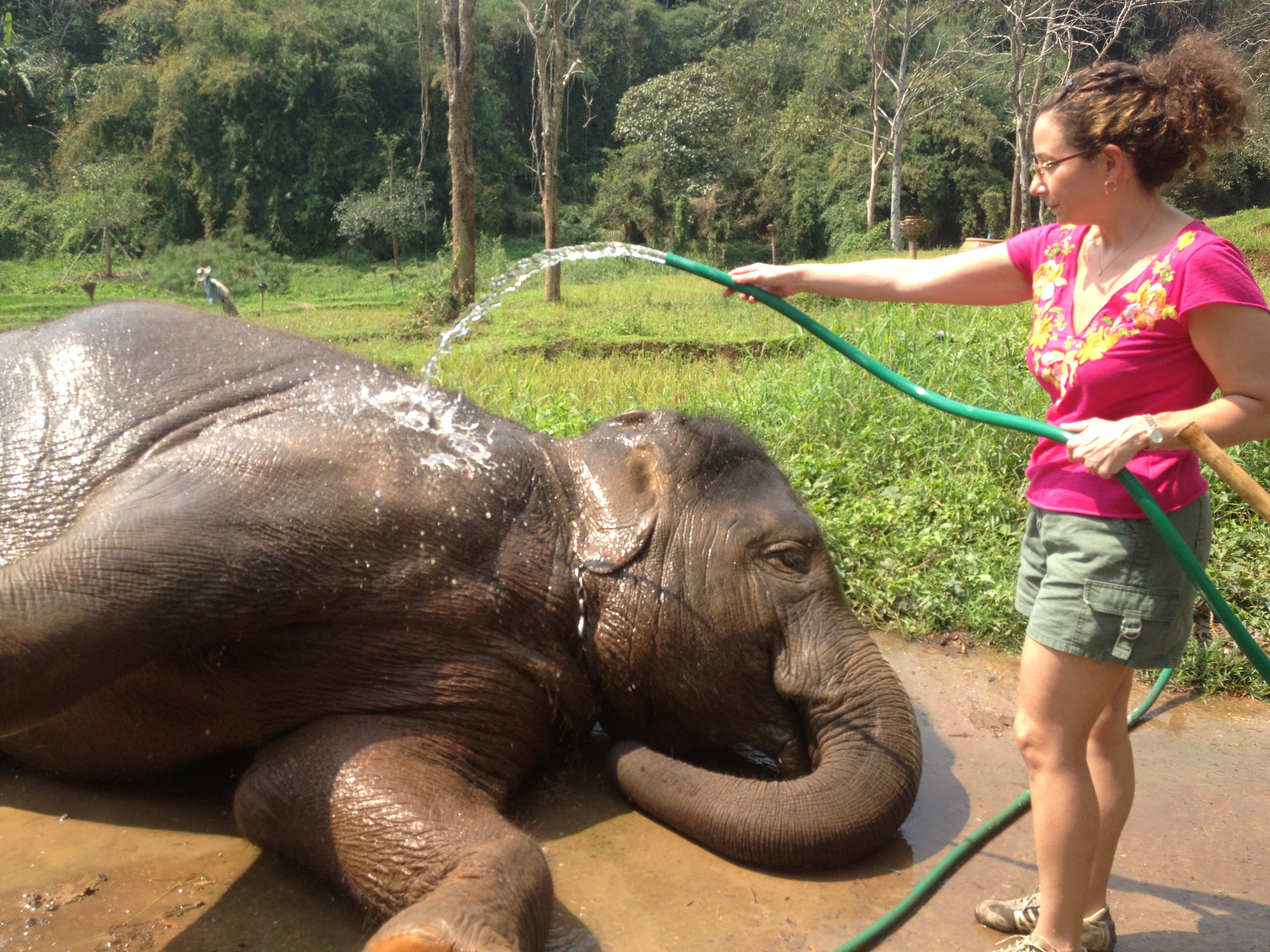
Meena having a bath
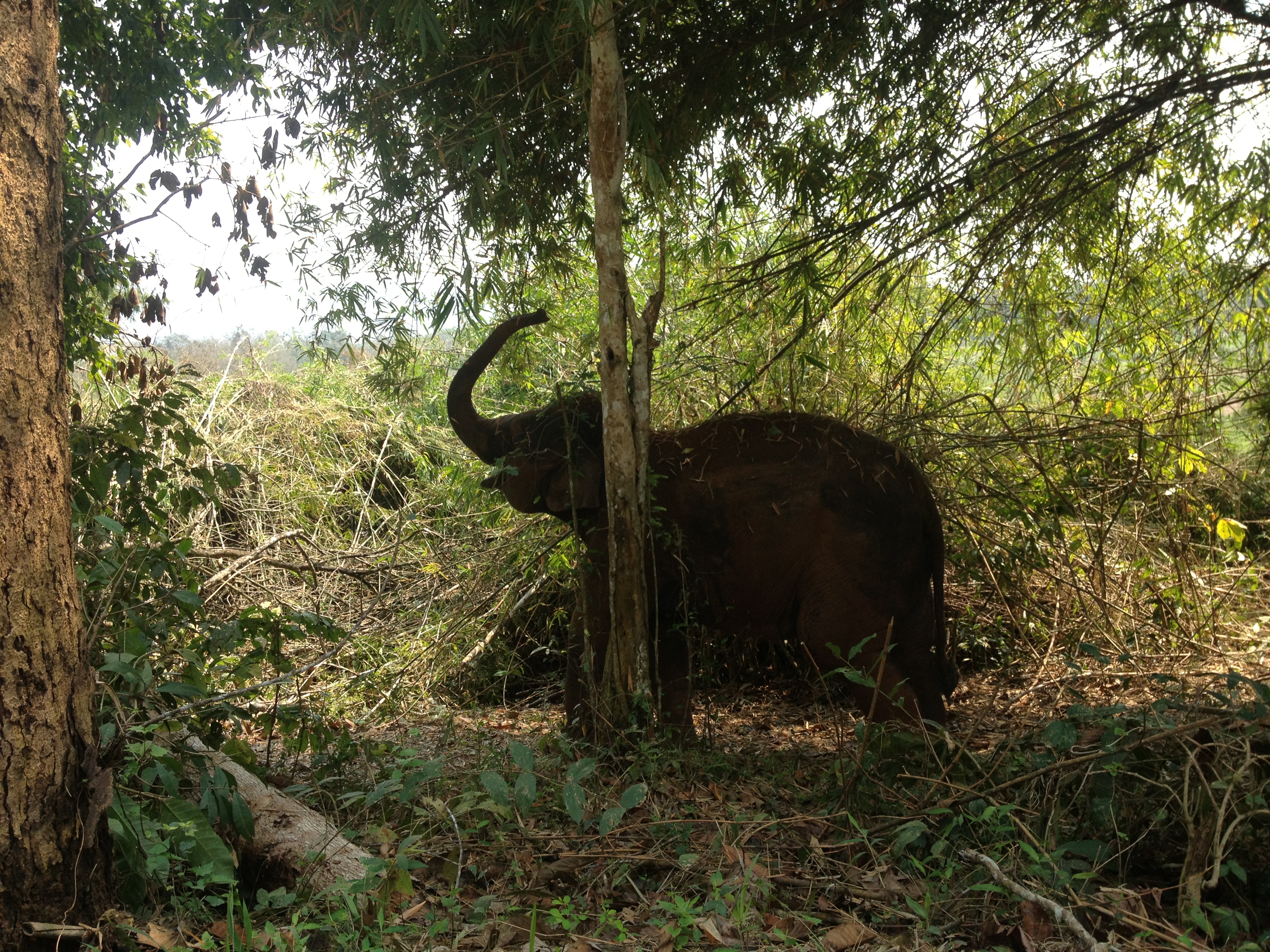
Meena after her bath
Private Dinner with Baby Elephants
We thought we would go all out and have the private dinner at the baby elephant camp. After a short drive to the camp we saw the open air cabana on a platform lit up with votive candles. We said hi to three ‘baby’ elephants (seven – ten years old) and gave them snacks. The cabana was decorated with curtains, fresh flowers, and candles. We lingered over a four-course dinner for nearly three hours as we watched the elephants below. (We pre-selected a menu from about eight options. There was so much food – enough for several people.) After dinner, we did a Thai tradition of releasing a wish lantern. We lit a fuel cell under a large white balloon, let go, and watched it float into the sky. After we said goodbye to the elephants, the mahouts jumped on and took them to the forest to go to sleep.
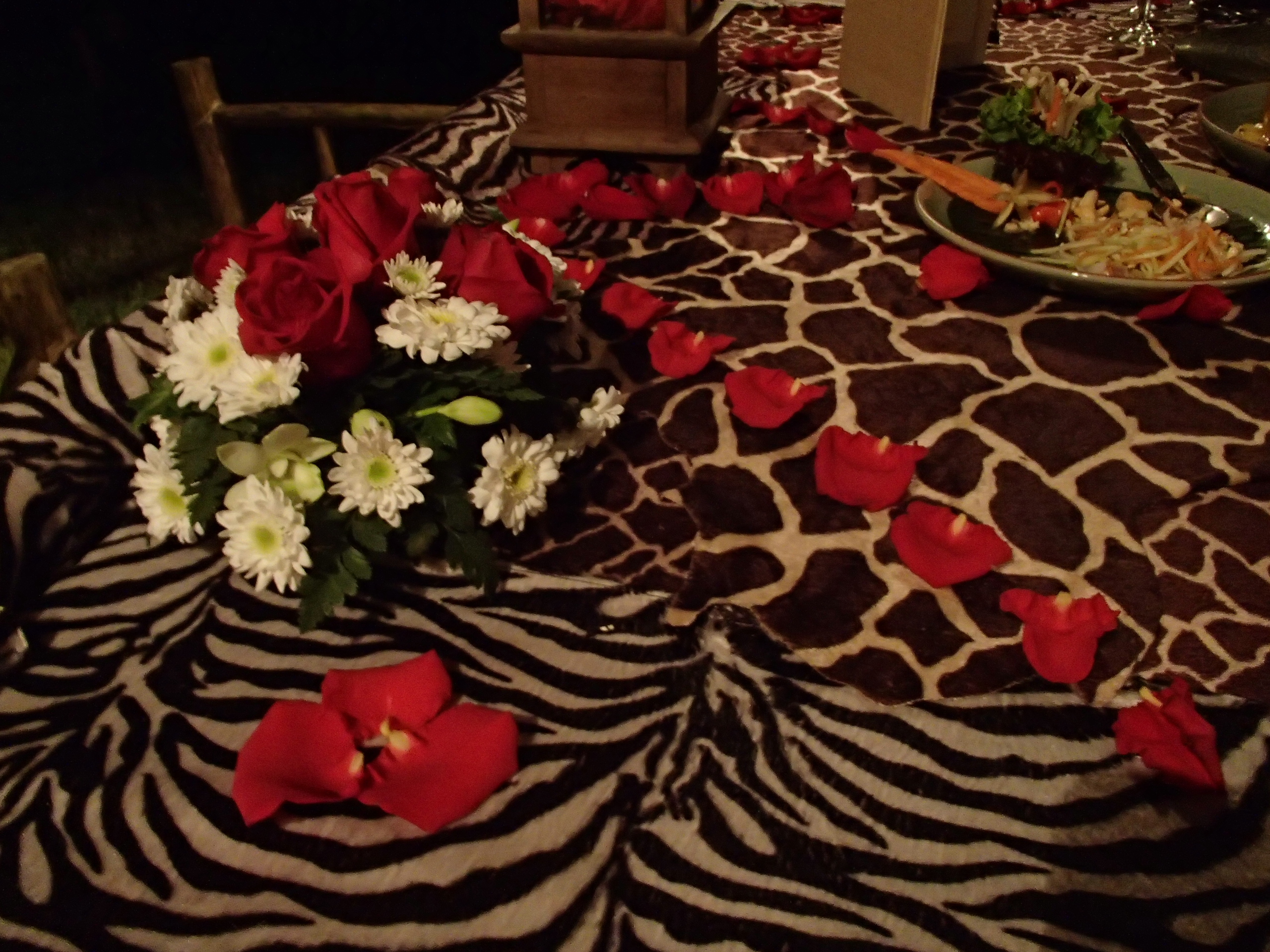
Baby elephant camp dinner
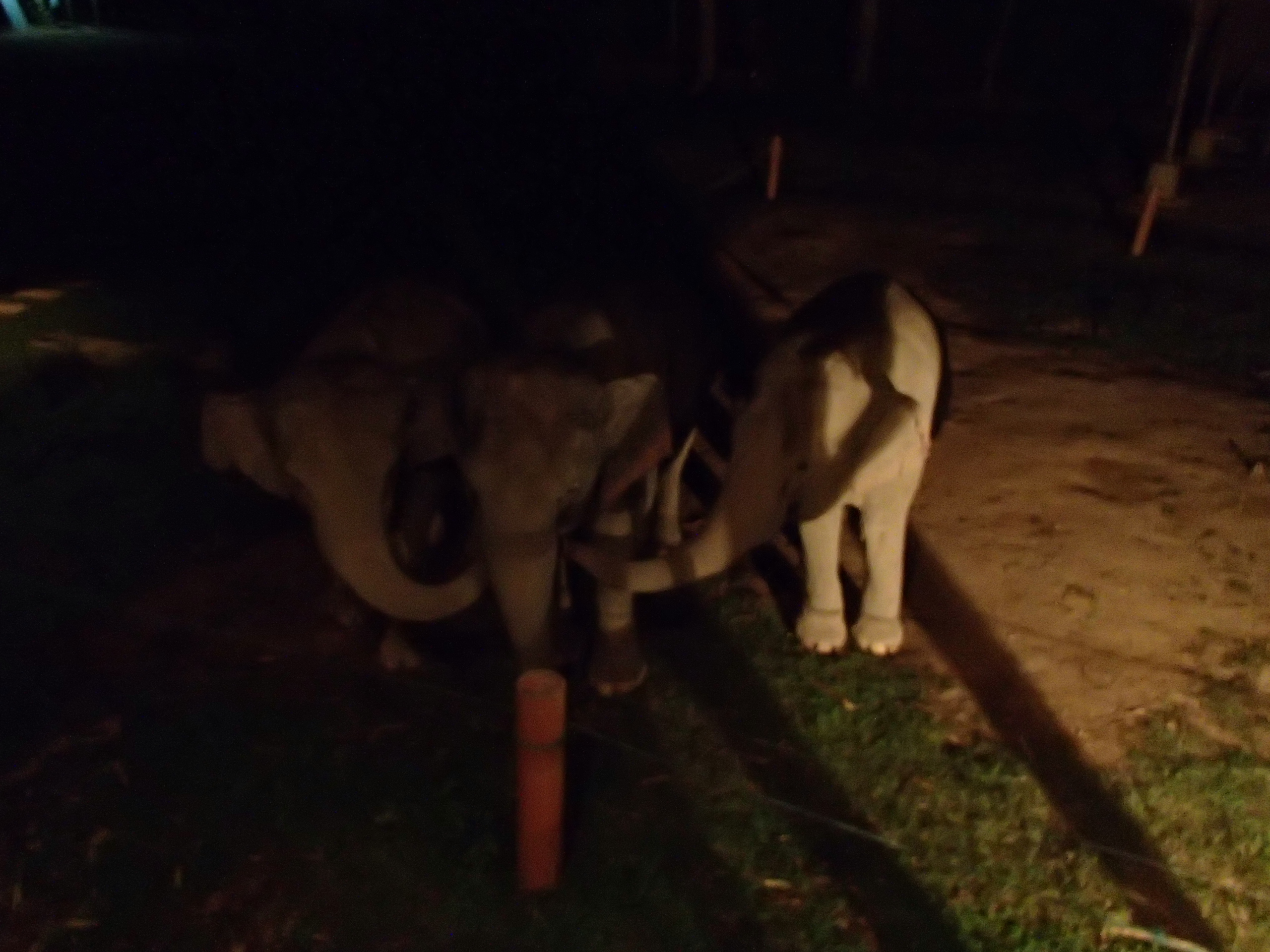
Baby elephants say hi
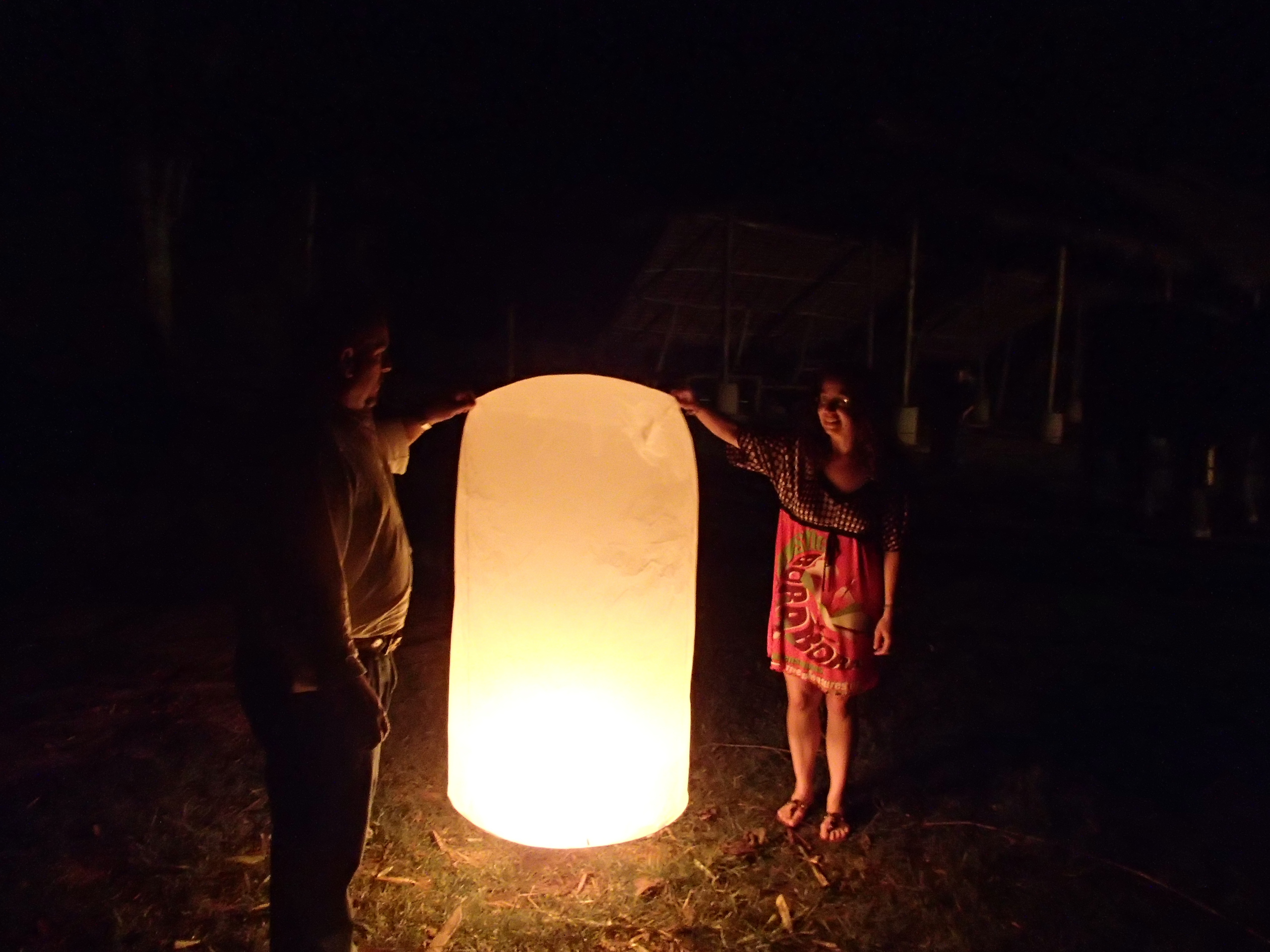
Thai wish lantern
Impressions
It was incredible to learn so much about Asian elephants and meet them in person vs. just looking at them from a distance. Michael visited Thailand in the late ’80s and saw the elephants working on the streets. After learning so much about their needs, it really hit home why this was so detrimental and the positive impact the NGOs achieve.
Wanna see some photos?
Elephant Conservation News
Three months after our visit, we saw this post about Meena on the Anantara blog.
Dwelling on the Downsides of Dogmatism



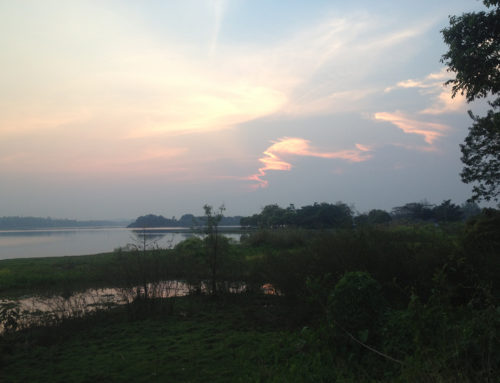
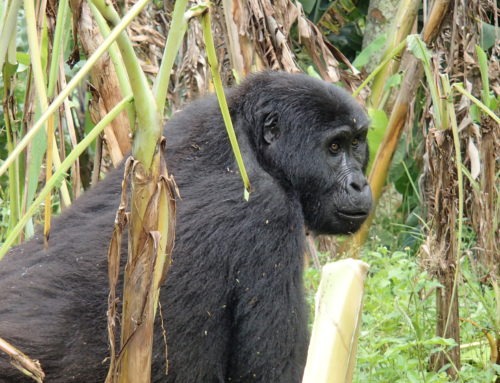
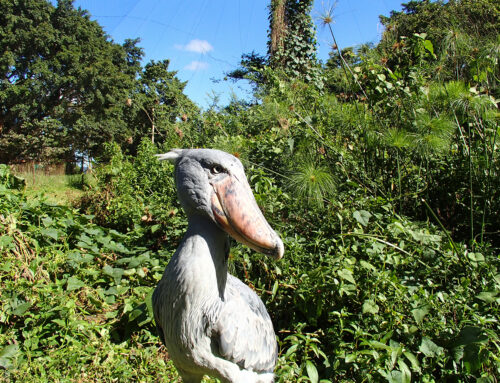
Leave A Comment